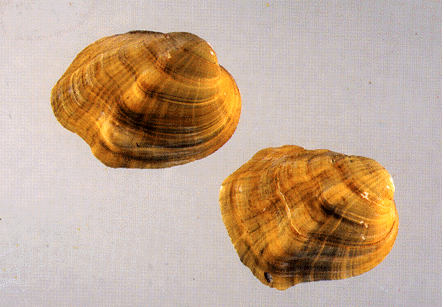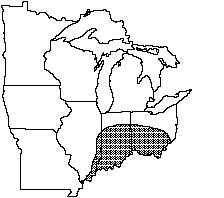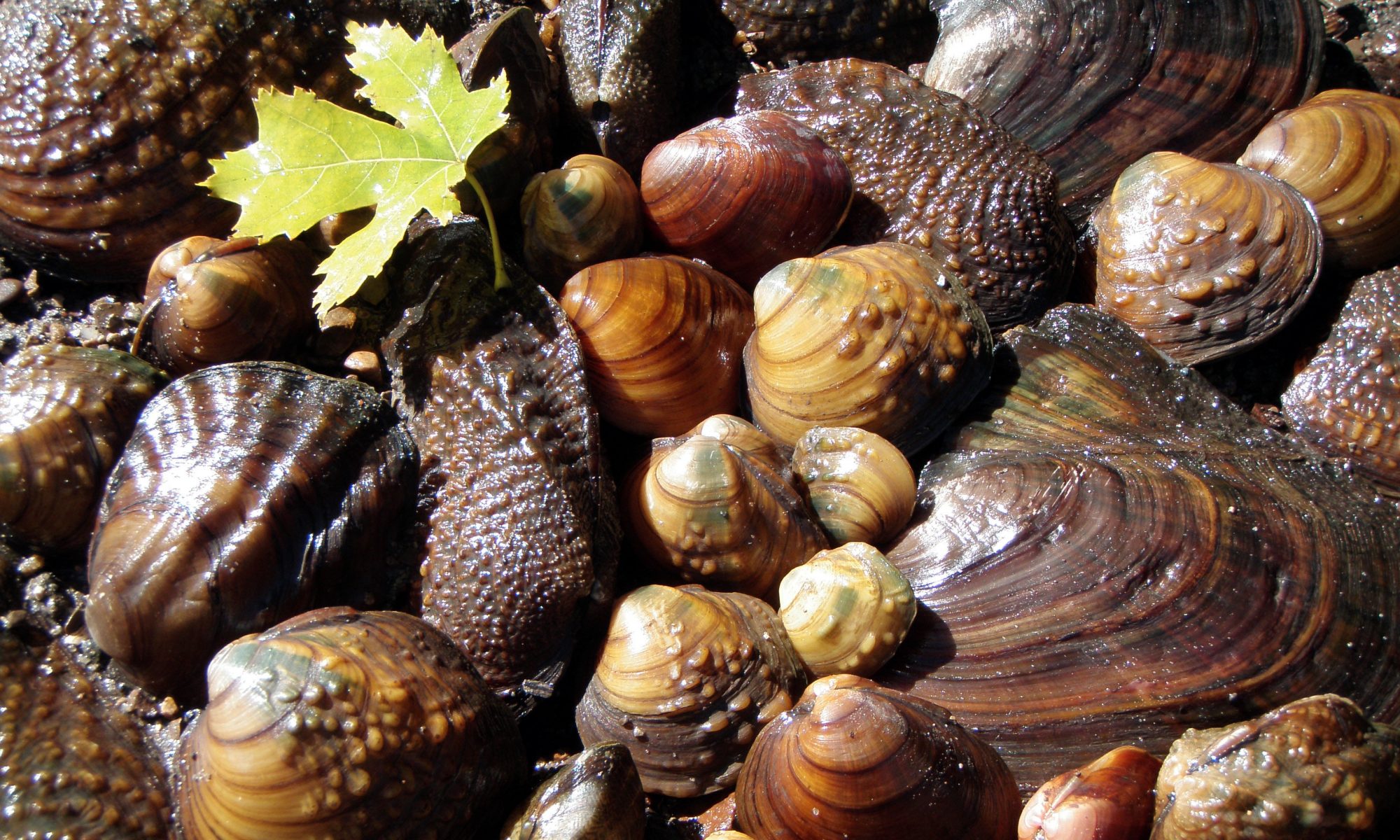Epioblasma torulosa (Rafinesque, 1820)

Other common names: None.
Key characters: Males and females yellowish brown with green rays but much different in shape. Males oblong with a sulcus running along the posterior ridge from the umbo to the ventral margin. Females with a large expanded posterior end. Both with a series of enlarged knobs running from the beaks and continuing to the posterior-ventral margin.
Similar species: Northern riffleshell, sheepnose, threehorn wartyback.
Description: Shell thick anteriorly, much thinner posteriorly, elongate, and inflated. Anterior margin rounded, posterior-ventral margin broadly rounded or slightly truncated in females, indented in males. Umbos low, somewhat turned forward. Beak sculpture of two or three indistinct ridges, evident only in very young shells. A row of large tubercles or knobs running from the beaks and continuing to the posterior-ventral margin. A wide, shallow sulcus or depression present between the row of knobs and the posterior ridge. Periostracum yellowish brown with numerous fine green rays, obscure in older shells. Length to 3 inches (7.6 cm).

Pseudocardinal teeth triangular, divergent, and roughened; two in the left valve, one in the right with two smaller teeth on either side. Lateral teeth short, straight and roughened; two in the left valve, one in the right with a much smaller tooth below. Beak cavity moderate to shallow. Nacre white, iridescent posteriorly.
Habitat: Medium to large rivers in gravel riffles.
Status: Federally Endangered. Extirpated from the Midwest.

